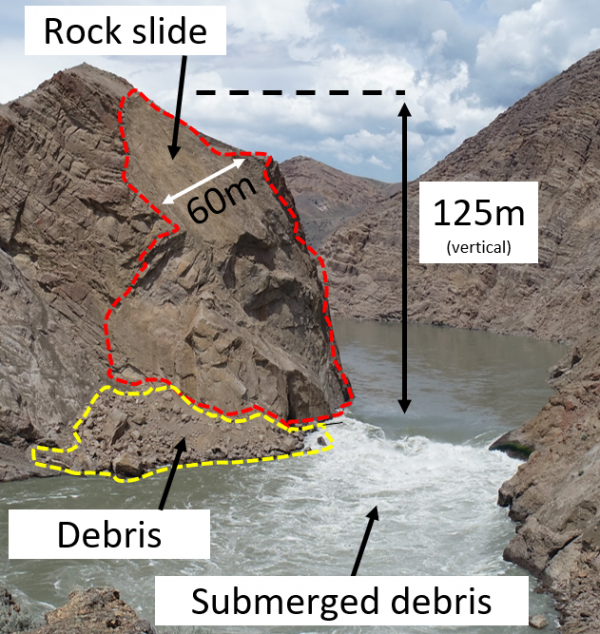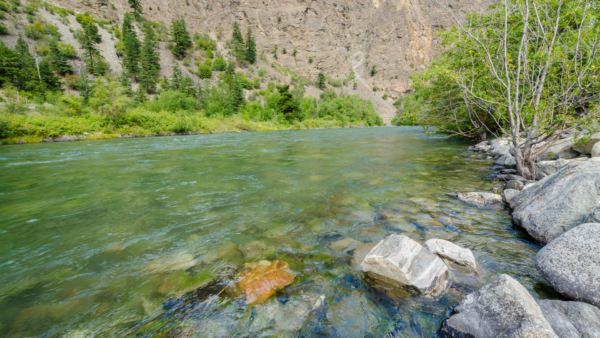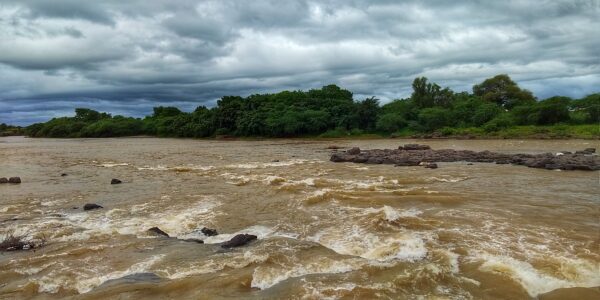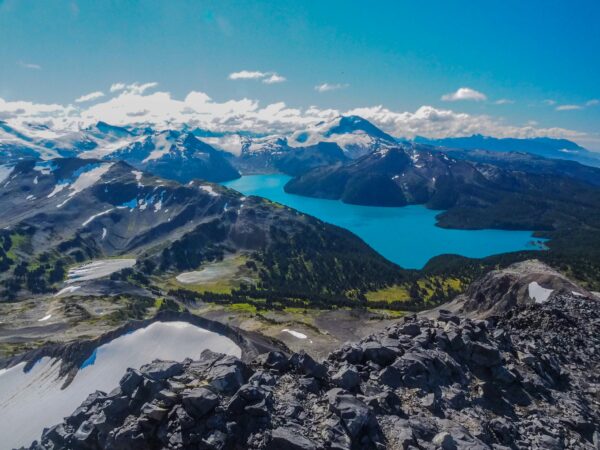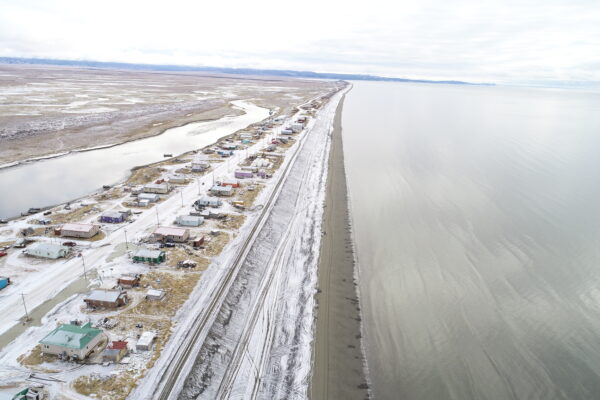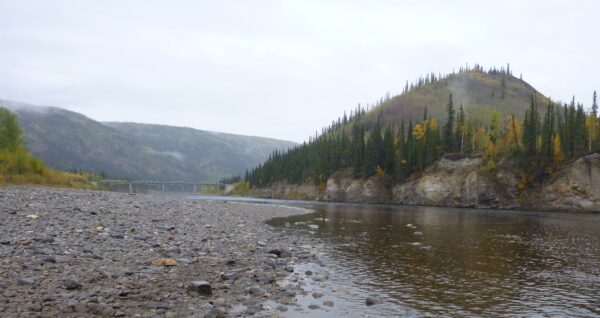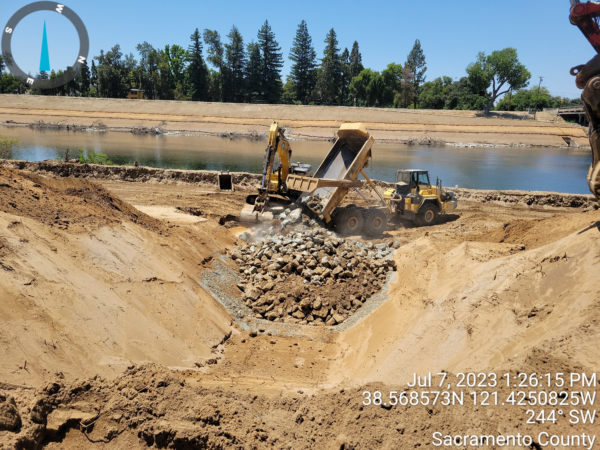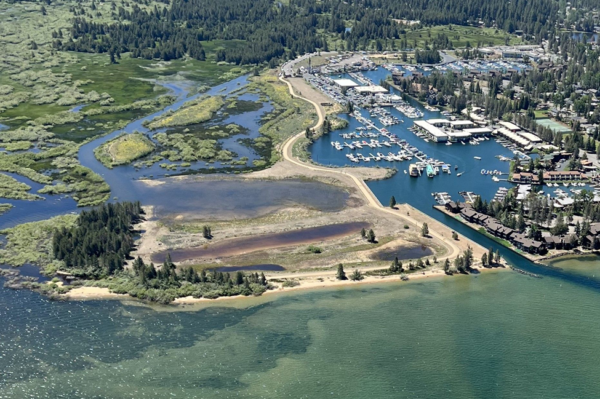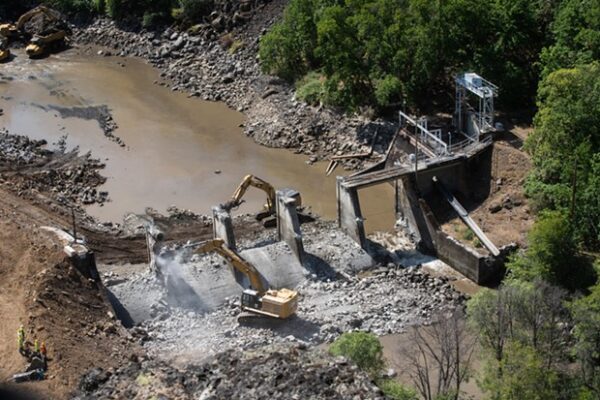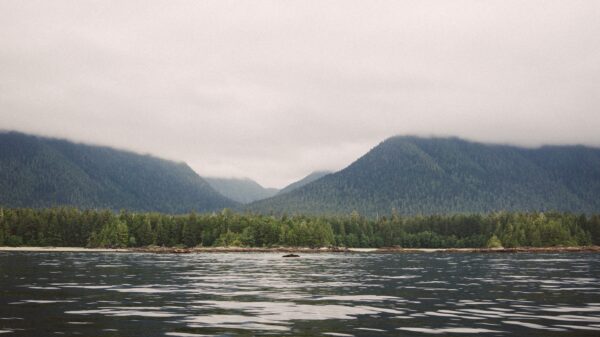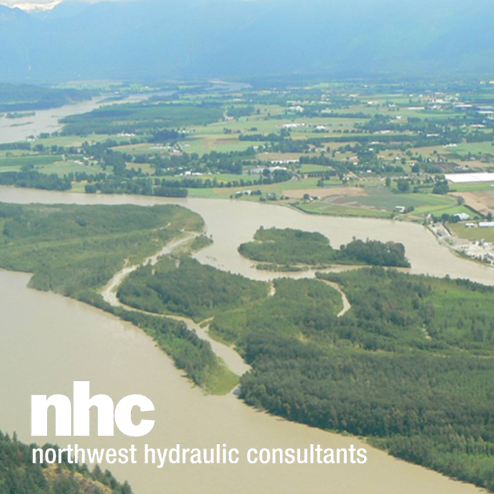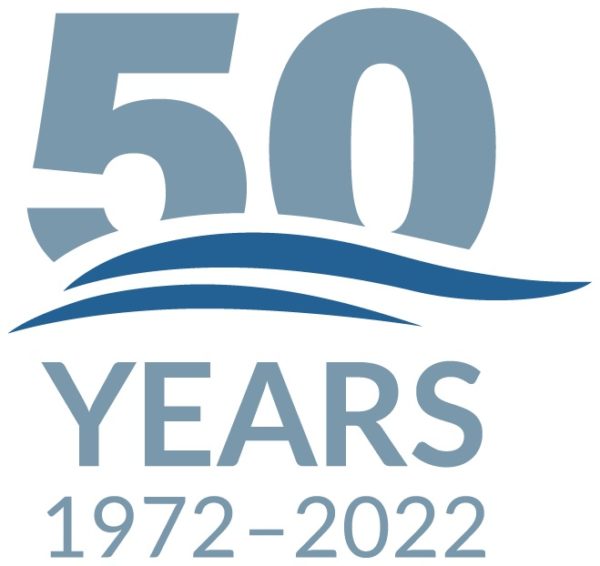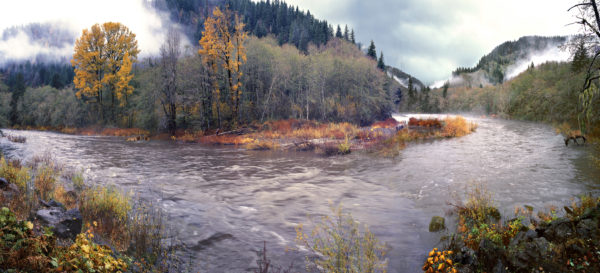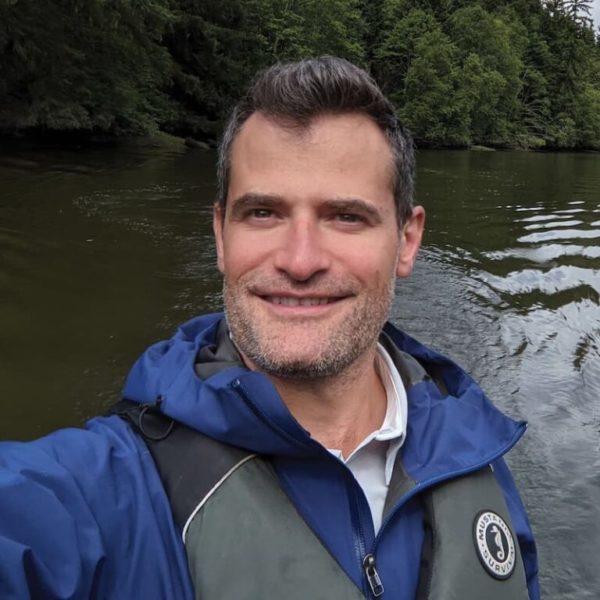In November 2018, a massive rockslide occurred on the Fraser River north of Lillooet, British Columbia. A rockslide, initiated on a riverbank bedrock outcrop, failed and filled the 13-meter-deep channel with rubble, creating a 5-meter-high cascade. This massive hydraulic created a near-complete barrier to salmon passage, preventing upstream migration of upper Fraser Sockeye, Chinook, Coho, and Pink salmon, and Steelhead. The location of the rockslide isolated approximately 50 percent of the watershed at a location 75-meters-wide within a kilometer-long canyon, with little access and 40 km from the nearest community. Because of hydraulic conditions at freshet, passage efficacy for early Stuart Sockeye and Upper Fraser Spring Chinook was poor; 86 out of 26,000 early Stuart Sockeye were counted on the spawning grounds.
NHC has been working for Fisheries and Oceans Canada (DFO), the BC Provincial Government, and Indigenous Communities since discovery of the slide in May 2019, and was one of the first responders to assess the site. We have provided site surveying, hydrology and hydrometrics, fish passage assessment, fisheries engineering, and site construction support since that time – with a continual site presence during the critical work in the summer of 2019. The emergency response undertook emergency fish capture and transport above the slide, while engineering and technical crews worked on the slide to mitigate the effects and enable natural fish passage. Ongoing mitigation work is continuing in 2020.
The site had no ready access, so materials, workers, and equipment were either lowered 125 meters down to the work site or delivered by helicopter. Up to 25 scalers worked for over 12 weeks undertaking rock removal work on the slide. The scaling crews utilized NX Burst cartridges, expanding grout, air bags, and hydraulic rams to lever and remove rock along the right bank as flow dropped throughout the summer. The work removed large rocks that impeded flow and created impassible hydraulics, as well as constructed small “cheater channels” that allow fish to migrate up the slide of the cascade. Volitional passage was achieved through a combination of lower water levels and rock removal that led to the natural passage of approximately 250,000 fish.
For more information on this project, please contact Barry Chilibeck.
https://eos.org/articles/remote-landslide-puts-fraser-river-salmon-on-shaky-ground
